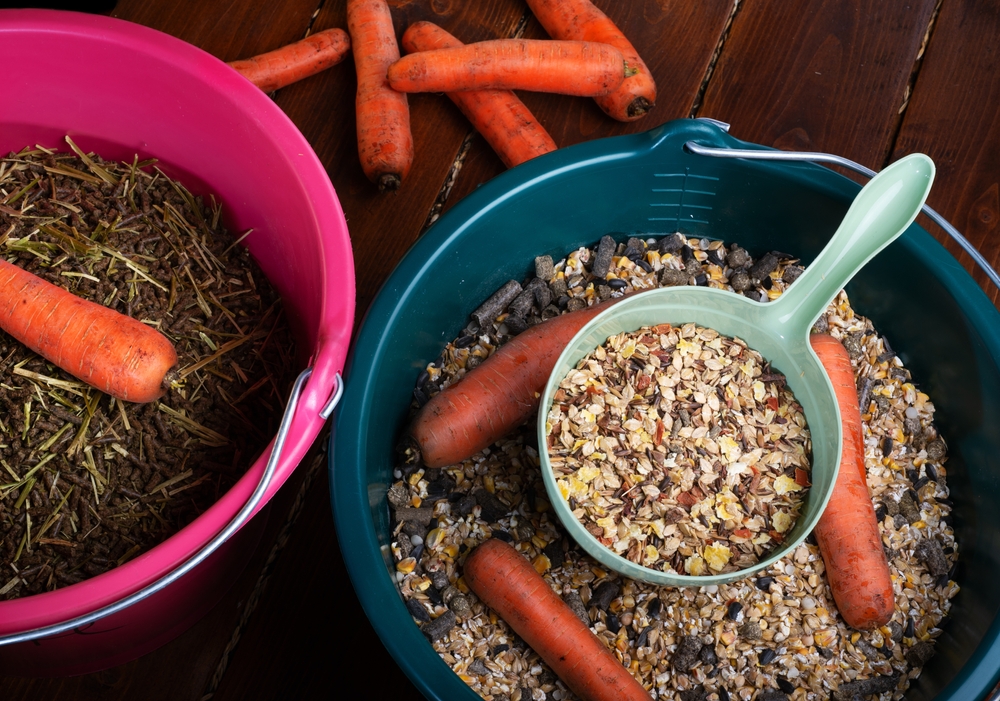To achieve optimal performance in any equine sport, meeting the increased nutritional requirements of the equine athlete is vital. While energy is arguably the most important dietary factor and often the first to consider, the various minerals and key vitamins required in higher levels all play important roles in cardiovascular function, muscle health, flexibility, bone strength, increased energy storage and utilisation, and recovery. Therefore providing the correct levels of these in the diet is essential and often simple dietary changes to meet these requirements can make significant differences to performance.
Each mineral and vitamin plays a different role in the horse’s body and contributes to overall health and performance in various ways. Macro minerals such as calcium (Ca) and phosphorus (P) are critical for the constant bone-remodelling process in performance horses, and the amounts and the ratio of Ca:P are both important. The ideal ratio of Ca to P is 2:1. Higher ratios of up to 7:1 can occur, especially in diets rich in lucerne, and these can cause bone weaknesses over time. An inverted ratio of higher phosphorous levels that calcium can also lead to significant problems including a condition where calcium deposits around the jaw and face causing bony enlargements. High quality commercial feeds will be balanced for calcium and phosphorous, therefore removing any guesswork required by the owner to ensure the correct ratio is being provided.
Magnesium is another important macro mineral for working horses, and has a multitude of roles in the equine body including being one of the major minerals of bone, and working in conjunction with calcium in nerve transmission and muscle contraction. Magnesium is one of the most popular supplemented nutrients in New Zealand mainly for behavioural management. While magnesium plays important roles in neurological functioning and certainly a deficiency can result in an increase of anxious or nervous behaviour, there are little studies linking it to improving behaviour if requirements are met daily. The National Research Council (NRC), recommends providing 0.1%-0.3% magnesium daily, which is equal to approximately 10-15 g per day based on at least 9 kg of dry matter intake. Most feedstuffs will easily meet this, and commercial feeds have magnesium added to the formulas.
Salt and additional electrolytes are one of the most important supplements to provide performance horses as daily sweating will deplete reserves of sodium, chloride and potassium. Replenishment is essential for maintaining optimum fluid balance in the horse and assisting with rehydration as well as muscle health. While trace minerals are required in much smaller amounts, meeting requirements is essential in the working horse. Studies have shown an increase in the requirement for zinc in exercised horses, and because copper, zinc, and manganese compete for absorption, all three minerals should be increased in feeds for exercising horses.
Selenium is also a popular supplemented nutrient in NZ mainly due to the pastures here that are generally deficient in this important antioxidant. Selenium helps to protect muscles from damaging free radicals and provides immune support. While a deficiency can cause health problems and muscle stiffness and even wastage in working horses, selenium can be toxic at high levels and care should be taken to avoid multiple selenium supplements which could cause over-fortification.
Vitamin E is another strong antioxidant that works closely with selenium and the two nutrients are known to compensate for each other when one is provided in low levels. Vitamins such as vitamin E and the B group vitamins, are found in higher levels in fresh pasture. Therefore when horses do not have access to pasture and must rely on alternative forage sources such as hay and baleage, a decline in some vitamins in the tissues and blood could result. B vitamins are produced in large quantities during fermentation in the hindgut. However, they are not efficiently absorbed from that section of the digestive tract, particularly when high-grain diets are fed and horses are under the stresses of training and competing.
NRC states that thiamine (B1) requirements increase from 30 to 62.5 mg in a 500kg horse in light exercise versus heavy exercise, and Riboflavin (B2) requirements ranged from 20-25 mg. While requirements have not been established for niacin, biotin, folate, B12, B6, and pantothenic acid at this time, a well-balanced commercial feed for performance horses should contain these vitamins.
NRM and McMillan equine feeds have all been formulated to provide the correct amount of all essential nutrients for any performance horse in a balanced way when fed at the correct levels and combined with New Zealand forages.
For assistance with feeding plans to enhance overall health and performance, consult with an experienced equine nutritionist.
Article supplied by Luisa Wood, Equine Nutritionist for NRM and McMillan Feeds

